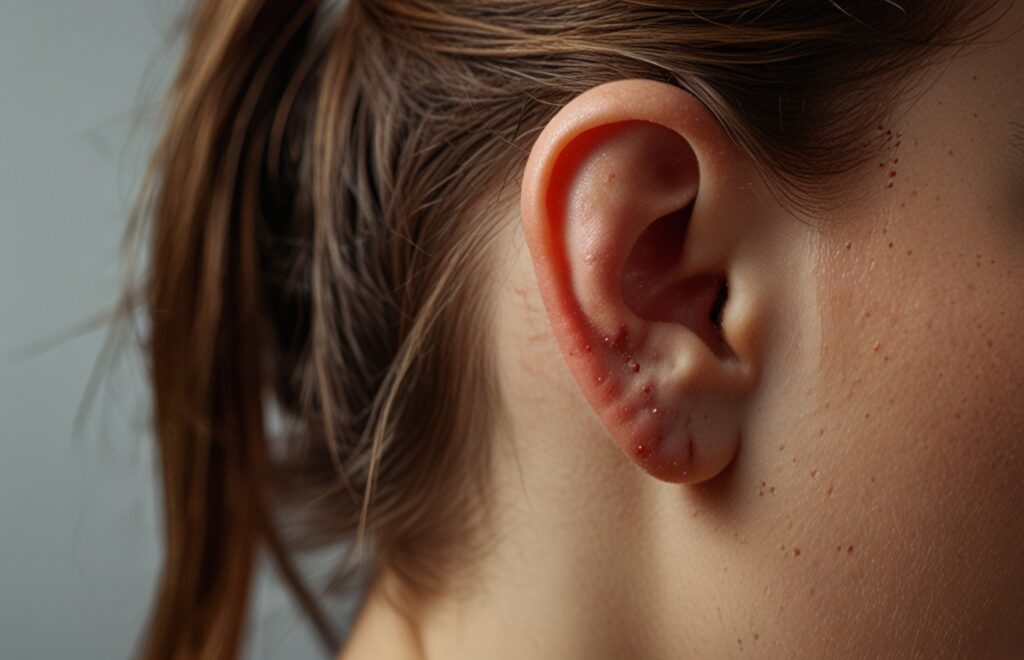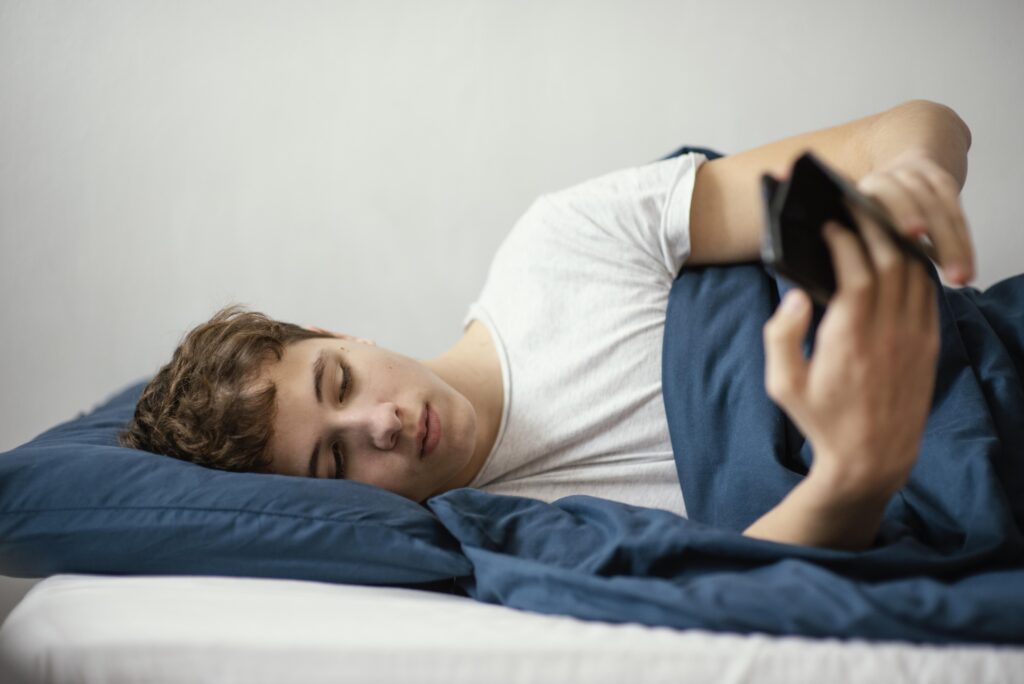Have you ever woken up with a sore ear after a long night sleep? You might be experiencing something known as “pillow ear.” This condition caused by prolonged pressure on the ear, often from lying on a hard or unsuitable pillow. Understanding this condition is crucial because it can lead to discomfort and even more serious health issues if not addressed.
Causes of Pillow Ear

Prolonged Pressure on the Ear
The primary cause of pillow ear is prolonged pressure on the ear. This typically happens when you lie in one position for an extended period, such as during sleep. When the ear is subjected to continuous pressure, it restricts blood flow to the area, leading to inflammation and discomfort. The skin and cartilage of the ear are delicate and sustained pressure can cause them to become sore and swollen.
Impact of Sleeping Positions
Your sleeping position plays a significant role in the development of pillow ear. Side sleepers are particularly prone to this condition because they place continuous pressure on one ear. Sleeping on the same side every night can increase the problem, as the ear does not get a chance to recover from the pressure and strain it endures.
Use of Certain Types of Pillows
Not all pillows are created equal. Some are too hard or lack the necessary support, contributing to the development of pillow ear. Using a pillow that does not align well with your head and neck can create the issue. Hard pillows can create more pressure points, while overly soft pillows might not provide adequate support, leading to improper head and neck alignment and increasing pressure on the ear.
Symptoms of Pillow Ear

Redness and Swelling
One of the first signs of pillow ear is redness and swelling in the affected area. This occurs due to the restricted blood flow and subsequent inflammation. The skin may appear red and the area around the ear can become puffy and swollen, signaling that the tissue is irritated and inflamed.
Pain and Tenderness in the Ear
Pain and tenderness are common symptoms of pillow ear. The ear may feel sore to the touch and can cause significant discomfort, especially when lying down or putting pressure on the affected side. This pain can range from a mild ache to a sharp, intense sensation depending on the severity of the condition.
Development of Sores on the Ear
In severe cases, this condition can lead to the development of sores. These sores can become infected if not properly treated, leading to further complications. Open sores or blisters on the ear are a clear indication that the condition has progressed and requires medical attention to prevent infection and promote healing.
Who is at Risk for Developing Pillow Ear?
Age-Related Factors
While this condition can affect anyone, older adults are more susceptible due to thinner skin and reduced fat padding in the ear area. As we age, our skin loses elasticity and becomes more fragile, making it more prone to damage from sustained pressure.
Impact of Occupation and Lifestyle Choices
Certain occupations and lifestyles that require long periods of lying down or using headphones can increase the risk of developing pillow ear. For example, people who spend a lot of time in bed due to illness or those who use large, over-ear headphones for extended periods are at higher risk.
Pre-existing Health Conditions
Individuals with pre-existing conditions such as arthritis, skin disorders or circulation issues are at a higher risk of developing pillow ear due to increased sensitivity and inflammation. Conditions that affect the skin or reduce its resilience can make it more vulnerable to the effects of prolonged pressure.
Treatment Options for Pillow Ear
Implementing Home Remedies
For mild cases, home remedies can be effective. Applying a warm compress can help reduce inflammation and pain. Simple measures like using a soft pillow or adjusting your sleeping position can also alleviate symptoms.
Medical Treatments
Topical Ointments for Relief
Topical ointments can help soothe the skin and reduce inflammation. These are usually available over the counter or by prescription and can provide relief from pain and swelling.
Using Antibiotics to Treat Infections
If the sores become infected, antibiotics may be necessary to treat the infection and prevent further complications. It’s important to follow a doctor’s advice and complete the full course of antibiotics to ensure the infection is fully resolved.
Surgical Interventions
In rare cases, surgical intervention may be required to remove persistent sores or address underlying structural issues. Surgery is typically considered only when other treatments have failed and the condition significantly impacts the patient’s quality of life.
Preventive Measures to Avoid Pillow Ear

Choosing the Right Pillow
Investing in the right pillow is crucial. Look for pillows that provide adequate support and align well with your head and neck. Memory foam, latex and specially designed ergonomic pillows can offer better support and help distribute pressure evenly.
Sleeping Positions to Reduce Pressure
Training yourself to sleep in different positions can help reduce pressure on your ears. Consider alternating sides or sleeping on your back. Using pillows to prop yourself in a certain position can also help maintain a comfortable and pressure-free sleep posture.
Maintaining Proper Ear Hygiene
Regularly cleaning your ears and ensuring they are dry can help prevent infections that might create pillow ear symptoms. Avoid using harsh chemicals or inserting objects into the ear canal as this can cause irritation and damage.
Role of pillows in Preventing Pillow Ear
Different Types of Pillows
Memory foam, latex and specially designed ergonomic pillows can provide better support and reduce the risk of pillow ear. Each type of pillow has unique properties that can benefit different sleeping styles and preferences.
Benefits of Using Specialized Pillows
Specialized pillows designed for side sleepers can help distribute pressure more evenly and reduce the likelihood of developing pillow ear. These pillows often have contoured shapes and materials that conform to the head and neck, providing better alignment and support.
How to Choose the Best Pillow
When choosing a pillow, consider factors like firmness, material and your sleeping position to ensure it provides the right support. It’s important to test different pillows and choose one that maintains comfort and proper alignment throughout the night.
Best Pillows for Pillow Ear

Coop Home Goods – Eden Adjustable Pillow
The Coop Home Goods Eden Adjustable Pillow is highly recommended for its customizable features. Made from memory foam, it allows users to add or remove filling to achieve the perfect height and firmness. This adjustability helps side sleepers find the ideal support level, minimizing pressure on the ear and promoting a comfortable sleep experience.
Tempur-Pedic TEMPUR Cloud Pillow
The Tempur-Pedic TEMPUR-Cloud Pillow is another excellent choice. It is made from high quality memory foam that adapts to the shape of your head and neck, providing excellent support and pressure relief. The soft, plush feel of this pillow makes it ideal for reducing the risk of developing pillow ear, as it cradles the head and minimizes pressure points.
EPABO Contour Memory Foam Pillow
The EPABO Contour Memory Foam Pillow is designed with ergonomic contours to support the head, neck and shoulders. This pillow helps maintain proper spinal alignment and reduces pressure on the ear, making it a great option for side sleepers. The breathable memory foam and hypoallergenic cover add to the comfort and health benefits of this pillow.
Debunking Common Myths
There are several myths about pillow ear, such as it being a minor issue that doesn’t require attention. This misconception can prevent people from seeking necessary treatment and lead to worsening of the condition.
Providing Scientific Clarifications
Scientific evidence supports the importance of addressing pillow ear early to prevent complications and ensure proper ear health. Understanding the true nature of pillow ear can help individuals take appropriate steps to manage and prevent it.
Lifestyle Habits for Better Ear Health
Making small adjustments in your daily routine, like changing your pillow and sleeping positions, can significantly improve symptoms. Incorporating ear care into your daily routine can help maintain ear health and prevent recurrence of pillow ear.
Finding Support and Resources
There are numerous resources available, including support groups and online forums, where you can share experiences and get advice on managing pillow ear.
Conclusion
Pillow ear may seem like a minor inconvenience but it can lead to significant discomfort and health issues if left untreated. Understanding the causes, symptoms and treatment options is essential for managing and preventing this condition. By taking proactive steps such as choosing the right pillow and maintaining good ear hygiene, you can reduce the risk of developing pillow ear and enjoy a more comfortable sleep.
FAQs
What is pillow ear?
Pillow ear is a condition caused by prolonged pressure on the ear, often due to sleeping on a hard or unsuitable pillow, leading to inflammation and pain.
How can I prevent pillow ear?
Prevent pillow ear by using a supportive pillow, adjusting your sleeping positions and maintaining good ear hygiene.
Are there any specific pillows recommended for preventing pillow ear?
Yes, memory foam, latex and specialized ergonomic pillows are recommended as they provide better support and help distribute pressure evenly.
What should I do if my pillow ear symptoms persist?
If your symptoms persist, consult a doctor for a thorough evaluation and appropriate treatment.
Can pillow ear lead to serious complications?
Yes, if left untreated, pillow ear can lead to chronic pain, infections and even permanent ear damage.

I am a scientific researcher, passionate about the science of comfort. On this blog, I share comprehensive information about pillows, combining my expertise and research to help you find the perfect pillow for your needs.

